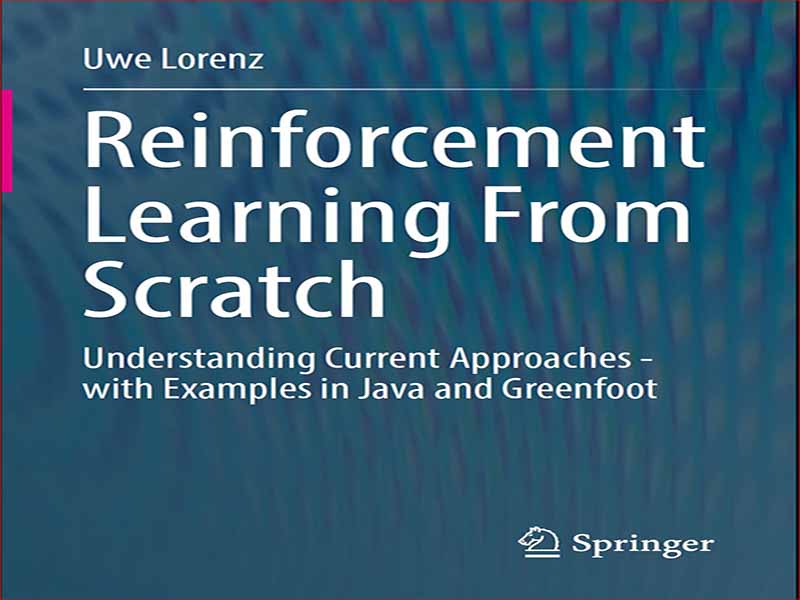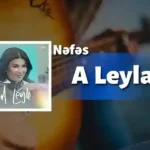- عنوان: Reinforcement Learning From Scratch – Understanding Current Approaches – with Examples in Java and Greenfoot
- نویسنده: Uwe Lorenz
- حوزه: برنامه نویسی جاوا, یادگیری عمیق
- سال انتشار: 2022
- تعداد صفحه: 195
- زبان اصلی: انگلیسی
- نوع فایل: pdf
- حجم فایل: 7.83 مگابایت
با توجه به نقل قول بالا، شاید محتوای این کتاب کاملاً به سطح مبتدی کاهش نیافته باشد، اما باید بسیار مناسب باشد، به ویژه برای تازه واردان به یادگیری ماشین. این کتاب برای کسانی است که دانش اولیه برنامه نویسی و ریاضی سطح دبیرستان را دارند. به عنوان مثال، برای آموزش مداوم برای معلمان و مربیانی که می خواهند بینشی در مورد عوامل تطبیقی برنامه نویسی به دست آورند، مفید است. این کتاب همچنین باید برای تکنسینها، دانشمندان کامپیوتر یا برنامهنویسانی که میخواهند الگوریتمهای RL را با مطالعه و پیادهسازی یادگیری این الگوریتمها از ابتدا (مخصوصاً اگر با جاوا اجتماعی شدهاند) و یا برای دانشآموزانی که میخواهند مطالعه کنند، مناسب باشد. یادگیری ماشین و عوامل هوشمند
یادگیری تقویتی حوزه ای از یادگیری ماشینی است و به حوزه وسیع هوش مصنوعی تعلق دارد. بسیاری بر این باورند که یادگیری تقویتی با شبکه های عصبی مصنوعی ارتباط دارد. اگرچه این کتاب همچنین به الگوریتمهای یادگیری تقویتی میپردازد که از شبکههای عصبی استفاده میکنند، اما این نقش اصلی را بازی نمیکند. یادگیری تقویتی عمیق در واقع زیرمجموعه ای از یادگیری تقویتی است که در آن برخی از توابع با شبکه های عصبی عمیق پیاده سازی می شوند. ممکن است تعجب آور باشد که توضیحات “Asynchronous Advantage Actor-Critic (A3C)” یا “Proximal Policy Optimization (PPO)” بدون استفاده از شبکه های عصبی امکان پذیر است.
ما در توضیح بیش از حد دقیق روابط ریاضی نمی مانیم، بلکه پیاده سازی های خود را از ابتدا انجام می دهیم. اجازه دهید از یک قیاس با ابزاری مانند Google Maps استفاده کنیم. آثاری هستند که بسیار کوچک شده اند. آنها یک نمای کلی ترسیم می کنند که ممکن است کاملاً خالی از ریاضیات و اجرای عینی باشد. این می تواند زمانی مفید باشد که می خواهید تصوری از منظره ایجاد کنید. تصوری از منظره ایجاد کند. از سوی دیگر، آثاری وجود دارند که به جزئیات می پردازند، برخی از آنها می خواهند استفاده از ابزارها را کاربردی گرا فعال کنند، شبه قادر به برنامه ریزی یک مسیر مشخص از طریق یک شهر واقعی هستند، برخی دیگر عمدتاً بر روی توصیف دقیق تمرکز می کنند. از نظریه.
هدف من این است که آنها درک درستی از فرآیندهای اصلی درگیر در یادگیری تقویتی داشته باشند. اگر می خواهید نحوه کار یک موتور بنزینی را آموزش دهید، لازم نیست یک مدل با عملکرد بالا را تجزیه و تحلیل کنید. یک مدل تقریبی که حرکت پیستون ها و غیره را نشان دهد کافی است. علاوه بر این، برخی از فرمول های ضروری وجود دارد که بینش را عمیق تر می کند، اما ما عمدتاً ساخت و سازهای خود را انجام خواهیم داد. برای من بهترین الگوی آموزشی مدلی است که توانایی الگوسازی توسط خودتان را آموزش دهد. برای درک واقعی چیزها، لازم است خودتان آنها را انجام دهید. همچنین انگیزه مهمی برای من بود که الگوریتم ها را در زبان برنامه نویسی “بومی” خود (جاوا) بازتولید کنم تا آنها را بهتر درک کنم.
یکی دیگر از مزایای این تمرین برای خواننده این است که او میتواند دانش را در چارچوبهای مختلف، با درک خوبی از معنای هر پارامتر یا عملکرد عملکردها، به کار ببندد، و شاید حتی طرحهای سفارشی خود را انجام دهد. . بنابراین، این کتاب به ویژه در صورتی مفید است که با زبانهای سبک C یا جاوا معاشرت داشته باشید و، برای مثال، ممکن است بخواهید یا نیاز به استفاده از کتابخانههای یادگیری تقویتی در زبان دیگری مانند پایتون داشته باشید. جاوا تا حدودی پیچیده است، اما ابزارهای بسیار پیچیده ای نیز برای بازی و یادگیری زبان وجود دارد. یک ابزار مهم و پرکاربرد که برای آموزش برنامه نویسی شی گرا با جاوا ایجاد شده است Greenfoot است که در اینجا برای برنامه ریزی رفتار تطبیقی برای برخی از «بازیگران» Greenfoot از آن استفاده خواهیم کرد. ما آنها را به عنوان عوامل تعاملی در نظر خواهیم گرفت که بخشی از جهان های (دو بعدی) هستند که می توانند به طور کامل توسط یادگیرنده ایجاد و کنترل شوند. مایلم از مایکل کولینگ (کینگز کالج لندن)، طراح ارشد Greenfoot، برای نظراتش در مورد این کتاب بسیار تشکر کنم. من آنها را روشنگر، دلگرم کننده و برانگیزاننده یافتم.
من می خواهم این کتاب را به فرزندانم یوناس، الیاس، پل و جولیا تقدیم کنم. قول می دهم حالا که این پروژه به نتیجه رسیده است، دوباره با هم کارهای بیشتری انجام دهیم. از همسرم آنجا تشکر می کنم که بدون حمایت او این پروژه امکان پذیر نبود. همچنین میخواهم از خواهرم اولریکه با نام مستعار «HiroNoUnmei» (https://www.patreon.com/hironounmei؛ آوریل، 2022) برای تصاویر خندهدار همستر در ابتدای هر فصل تشکر کنم.
مواد همراه (برنامه های جاوا، فیلم های توضیحی و غیره) از طریق صفحه محصول کتاب در SpringerLink قابل دسترسی هستند. از طریق سایت (https://www.facebook.com/ReinforcementLearningJava؛ آوریل، 2022)، همچنین ممکن است بتوان یک جامعه کوچک ایجاد کرد و تبادل نظر درباره محتوای کتاب و موضوع یادگیری تقویتی را آغاز کرد. به راحتی می توانید مشارکت های اساسی را در مورد موضوع یا نتایج جالب ارسال کنید. همچنین ممکن است این فرصت را بیابید که سؤالات درک مطلب بپرسید یا به نکاتی که باز باقی می مانند اشاره کنید.
Regarding the quotation above, perhaps the content in this book is not quite reduced to a beginner’s level, but it should be very suitable, especially for newcom¬ers to machine learning. It is a book for those with some basic knowledge of pro¬gramming and high school level math. It is useful, for example, for continuing education for teachers and instructors who want to gain insight into programming adaptive agents. The book should also be appropriate for technicians, computer sci¬entists, or programmers who want to better understand RL algorithms by studying and implementing learning these algorithms from scratch themselves (especially if they have been socialized with Java) or for students who want to study machine learning and intelligent agents.
Reinforcement Learning is an area of Machine Learning and belongs to the broad field of Artificial Intelligence. Many believe that reinforcement learning has something to do with artificial neural networks. Although the book also deals with reinforcement learning algorithms that use neural networks, this does not play a central role. Deep reinforcement learning is actually a subset of reinforcement learning, where some functions are implemented with deep neural networks. It may surprise that explanations of the “Asynchronous Advantage Actor-Critic (A3C)” or “Proximal Policy Optimization (PPO)” are possible without the use of neural networks.
We will not dwell on an overly detailed description of mathematical relation¬ships but rather do our own implementations from scratch. Let us use an analogy with a tool such as Google Maps. There are works that are zoomed out very far. They draw an overview that may be completely devoid of mathematics and concrete implementations. This can be useful when you want to give an impression of the landscape. give an impression of the landscape. On the other hand, there are works that get down to the details, some of them want to enable on the use of tools applica¬tion oriented, quasi enable to plan a concrete route through a real city, others focus mainly on a detailed description of the theory.
My goal is for them to get an understanding of the central processes involved in reinforcement learning. If you want to teach how a gasoline engine works, you do not have to analyze a high-performance model. A rough model showing the move¬ment of the pistons, etc., is sufficient. In addition, there are some essential formulas that deepen the insight, but we will mainly do our own constructions. For me, the best teaching model is the one that teaches the ability to model by yourself. To really understand things, it is necessary to do them yourself. It was also an important moti¬vation for me to reproduce the algorithms in my “native” programming language (Java) in order to understand them better.
An added benefit of this exercise for the reader is that he or she can apply the knowledge to a variety of frameworks, with a good understanding of what each parameter means or what the functions do, and perhaps even work out his or her own custom designs. Therefore, the book is particularly useful if you have been socialized with C or Java style languages and, for example, may want or need to use reinforcement learning libraries in another language such as Python. Java has the image of being somewhat complicated, but there are also some very sophisticated tools for playing with and learning the language. An important and widely used tool developed for teaching object-oriented programming with Java is Greenfoot, which we will use here to program adaptive behavior to some Greenfoot-”actors”. We will consider them as interacting agents that are part of (two dimensional) worlds that can created and controlled completely by the learner. I would like to thank Michael Kölling (King’s College London) very much, chief designer of Greenfoot, for his comments on this book. I found them insightful, encouraging and motivating.
I would like to dedicate this book to my children Jonas, Elias, Paul and Julia. I promise that now that this project has come to its conclusion, we will do more together again. I would like to thank my wife Anja, without her support this project would not have been possible. I would also like to thank my sister Ulrike aka “HiroNoUnmei” (https://www.patreon.com/hironounmei; April, 2022) for the funny hamster illustrations at the beginning of each chapter.
The accompanying materials (Java programs, explanatory videos, etc.) are acces¬sible via the product page of the book at SpringerLink. Through the site (https://www.facebook.com/ReinforcementLearningJava; April, 2022), it may also be pos¬sible to build a small community and initiate an exchange about the contents of the book and the topic of reinforcement learning. Feel free to post substantive contribu¬tions on the topic or interesting results. You may also find the opportunity to ask comprehension questions or address points that remain open.
این کتاب را میتوانید بصورت رایگان از لینک زیر دانلود نمایید.
Download: Reinforcement Learning From Scratch




































نظرات کاربران